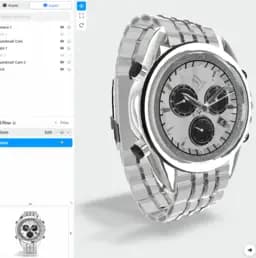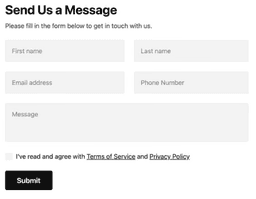PolyCam vs Canvas: How Are They Different?
If you’re into speedy, detailed 3D scanning with AR display and collaborative editing, PolyCam holds sway. However, for developers wanting absolute control over on-the-fly graphics creation and pixel-level manipulation, the flexibility of HTML reigns supreme.

Key Differences Between PolyCam and HTML
- 3D Scanning vs Graphics Creation: PolyCam specializes in 3D scanning and AR display, whereas HTML
is used for on-the-fly graphics creation.
- Collaborative Editing: PolyCam offers an integral collaborative editing feature, lacking in HTML
-
Device Dependence: PolyCam requires a LiDAR sensor-equipped device for full functionality, where HTML operates irrespective of device specifications.
- Pricing: While PolyCam pro edition incurs a cost, HTML is a free feature of HTML5.
| Comparison | Polycam | HTML5 Canvas |
|---|---|---|
| Primary Use | 3D Scanning for AR | On-the-fly Graphics Creation |
| Key Features | LiDAR Scanning, Photogrammetry, 360-degree Panorama, Collaborative Editing | Drawing Paths, Boxes, Circles, Text, Images |
| Additional Applicability | Contractors, Interior Designers, Architects, VFX, Filmmaking, 3D Art | Animations, Interactivity, and Gaming Applications |
| Applicable Versions | Android 8.0+, iOS 15.2+, iPadOS 15.2+ | Latest Versions of Firefox, Safari, Chrome, Opera |
| Tool Complexity | Advanced – Requires LiDAR Supported Device | Intermediate -Canvas is blank, graphics drawn with JavaScript |
| Pricing | Pro Edition at $14.99/month or $79.99/year | Free with HTML5 Capabilities |
| Notable Updates | AI-based 360 Capture System, Room Mode | RenderingContext for Display on Canvas, Path API, Drawing Styles |
| Support for 3D Objects | Yes – Export to Blender, Cinema4D, Unity, Unreal | No – Raster Graphics or Pixel Level Manipulation |
| Collaboration Features | Yes – Offers Sharing and Team Features | No – Individual Scripting |
What Is Polycam and Who’s It For?
Polycam is a 3D scanning application developed by Polycam Inc. It’s an inclusive platform which offers support for iOS, Android, and web users. The application boasts features like LiDAR scanning, photogrammetry, and 360-degree panorama capture, thereby making it ideal for contractors, interior designers, architects, VFX and filmmakers, 3D artists, and scene builders.
With Polycam, you can get creative with an array of modes and tools, including 3D capture, photo mode, and even drone mapping. The recent AI-based 360 capture system and Room Mode feature further augment its performance, making it a robust tool in the 3D scanning market.

Pros of Polycam
- Multiple features for 3D scanning with wide application scope
- Collaborative platform for editing and exploring
- Supports multiple exporting formats with Pro edition
- New AI-based features for increased accuracy
- Supports drone mapping
Cons of Polycam
- Limited compatibility for LiDAR scanning
- Paid Pro edition for additional features
- Big texture captures can appear black on mobile web browsers
- Android version lags behind in features
What Is HTML And Who’s It For?
HTML is an HTML element primarily used for rendering graphics on-the-fly, often with JavaScript. The HTML can house a myriad of graphical presentations, animations, and various types of interactivity, making it a potent tool for developers who aim for visually rich web applications.
Whilst merely houses graphics, it provides a multitude of functions like drawing paths, lines, creating gradients, and more. Therefore,

Pros of HTML
- Strong visual capability for interactive graphics and animations
- Widely supported by modern browsers
- Permits manipulation at pixel level
- Diverse path features and drawing styles
Cons of HTML
- Requires scripting for actual drawing
- Does not have support in IE8 without additional script
- Content not accessible for search engines
- Requires good coding skills
Polycam vs HTML Canvas: Pricing
In the comparison of technological pricing, while Polycam operates with a Pro subscription model, HTML Canvas comes without any direct costs – instead, it derives its value from developer interaction and utilization.
Polycam
Polycam offers a Pro edition priced at $14.99 per month or $79.99 per year. This Pro subscription unlocks advanced export formats and provides unlimited Photo Mode captures, alongside other feature enhancements.
HTML Canvas
As an inherent part of the HTML5 specification, the HTML element and its related APIs, do not have a specific pricing structure. Costs associated with HTML Canvas are, therefore, connected to the design and development time required for its implementation.
Code Examples for PolyCam & Canvas
PolyCam
This PolyCam example illustrates how to create an interactive panorama viewer. Prior to deployment, ensure you have Three.js library and equirectangular panoramic photo available.
var scene = new THREE.Scene();
var camera = new THREE.PerspectiveCamera(75, window.innerWidth / window.innerHeight, 0.1, 1000);
var renderer = new THREE.WebGLRenderer();
renderer.setSize(window.innerWidth, window.innerHeight);
document.body.appendChild(renderer.domElement);
var geometry = new THREE.SphereGeometry(500, 60, 40);
geometry.scale(-1, 1, 1);
var material = new THREE.MeshBasicMaterial({
map: new THREE.TextureLoader().load('path-to-equirectangular-photo')
});
var mesh = new THREE.Mesh(geometry, material);
scene.add(mesh);
camera.position.z = 0.1;
function animate() {
requestAnimationFrame(animate);
mesh.rotation.y += 0.005;
renderer.render(scene, camera);
}
animate();Canvas
The following Canvas snippet depicts a particle system over time. HTML5’s native Canvas API and JavaScript are prerequisites for this example.
var canvas = document.querySelector('canvas');
var ctx = canvas.getContext('2d');
canvas.width = window.innerWidth;
canvas.height = window.innerHeight;
var particlesArray;
class Particle {
constructor(x, y, size, weight) {
this.x = x;
this.y = y;
this.size = size;
this.weight = weight;
}
draw() {
ctx.beginPath();
ctx.arc(this.x, this.y, this.size, 0, Math.PI * 2, false);
ctx.fillStyle = 'rgba(173, 216, 230, 1)';
ctx.fill();
}
update() {
this.size -= 0.05;
if (this.size < 0) this.size = 0;
this.y += this.weight;
this.weight += 0.2;
if (this.y > canvas.height - this.size) this.weight *= -0.1;
}
}
function init() {
particlesArray = [];
for (let i = 0; i < 200; i++) {
let x = Math.random() * canvas.width;
let y = Math.random() * canvas.height;
let size = Math.random() * 5 + 2;
let weight = 1;
particlesArray.push(new Particle(x, y, size, weight));
}
}
function animate() {
ctx.clearRect(0, 0, canvas.width, canvas.height);
for(let i = 0; i < particlesArray.length; i++) {
particlesArray.update();
particlesArray.draw();
}
requestAnimationFrame(animate);
}
init();
animate();Polycam Vs Canvas: Drawing The Lines
As with most infatuations of the tech world, the choice between Polycam and HTML Canvas isn’t a generic, one-size-fits-all dictum. The right pick depends extensively on your digital artistry aspirations, development mastery, and project-specific requisites. Listed below are specific audience spectrums and our expert verdict for the same.
AR/VR Creators and Game Makers
For the AR/VR virtuosos and game architects, Polycam effortlessly takes the crown. Its LiDAR scanning, photogrammetry, and AR-specialised capabilities like 3D capture with Apple’s Object Capture technology offer the artillery you need for groundbreaking creations. The collaborative editing and shared feature, along with compatibility with Blender, Unity, Unreal, accelerate the development journey. Note, however, that effective use needs a device with a LiDAR sensor.

Interior Designers and Contractors
Polycam, again, triumphs owing to its Room Mode feature, enabling interactive LiDAR-based floor plans. Furniture placement and precise measurements – inch-level at best, further mould it into an indispensable tool. Plus, the ability to generate 3D prints from the captures realises superior project visualisation.
Web Designers and Developers
For masters scripting the web, HTML Canvas holds the upper hand. With capabilities for 2D drawing, animation, and image manipulation, Canvas makes an ideal partner for dynamic website elements and lightweight game development. However, bear in mind the need for browserscript, typically JavaScript, to draw graphics onto your canvas.

Polycam primarily excels with AR/VR, 3D designing, and interactive models, making it apt for game-makers, designers, and filmmakers. In contrast, HTML Canvas shines in web-based, lighter, on-the-fly graphics creation and manipulation, thus catering to web developers and designers.







